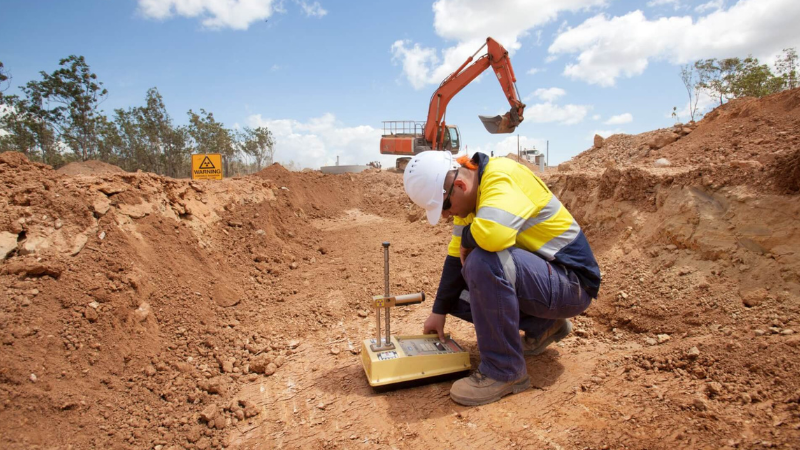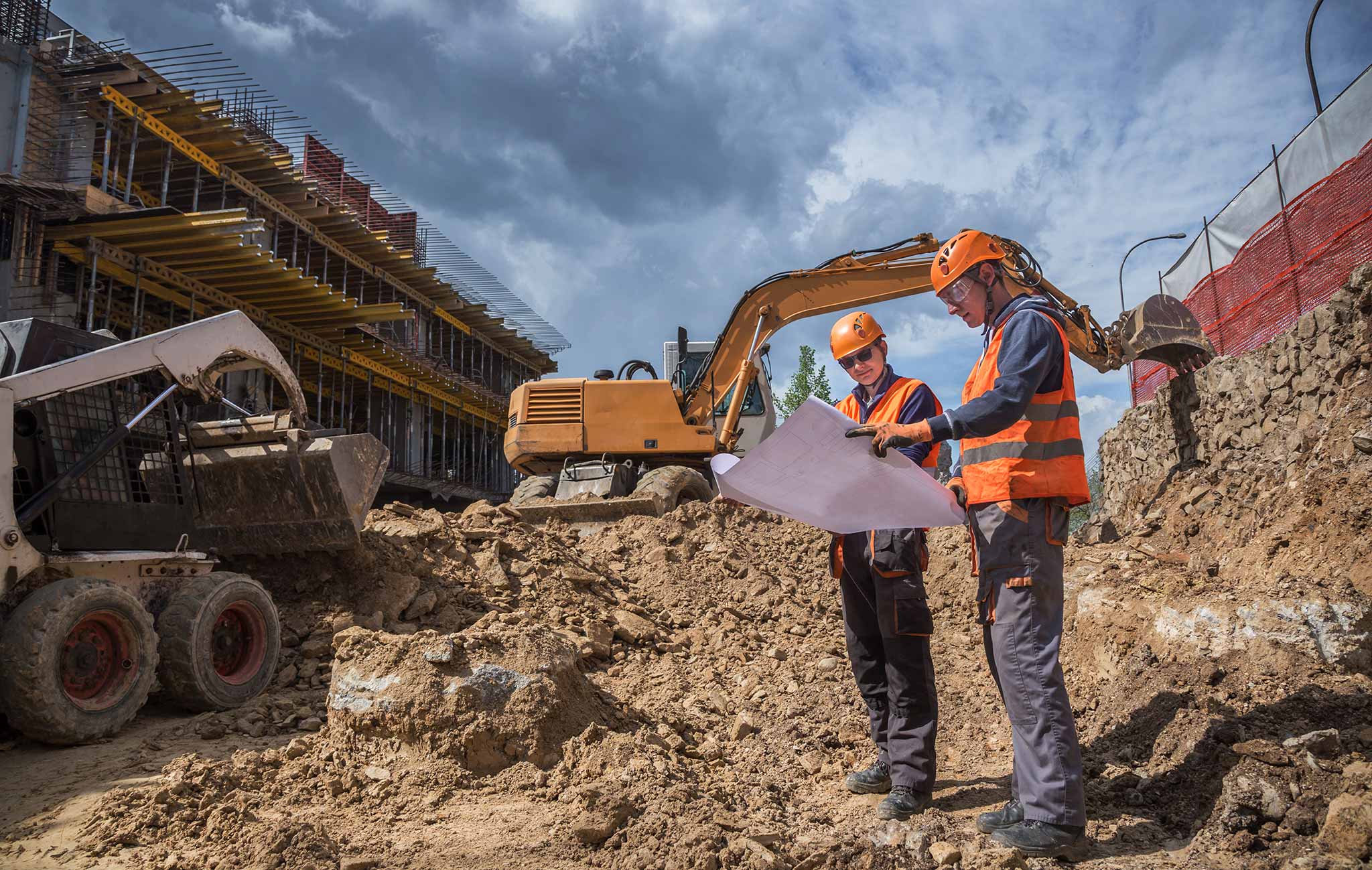Just How Geo Tech Engineering Sustains Large-Scale Construction Projects
Wiki Article
Comprehending the Comprehensive Duty of Geotechnical Engineers in Ground Investigation and Dirt Analysis for Construction Jobs
Geotechnical designers are indispensable to the success of building and construction tasks, supplying necessary insights via detailed ground investigations and dirt evaluation. Their proficiency in analyzing dirt habits and utilizing advanced screening methods notifies vital choices that promote structural stability and safety.Role of Geotechnical Designers
The critical role of geotechnical engineers in building jobs can not be overemphasized, as they supply essential insights right into soil behavior and site problems. These professionals are entrusted with assessing the suitability of the ground for different kinds of structures, guaranteeing safety and security throughout the construction procedure. Their competence encompasses a wide variety of activities, including site characterization, soil tasting, and laboratory screening, which are crucial for establishing the mechanical and physical buildings of the soil.Geotechnical designers utilize their searchings for to establish foundational styles that accommodate load-bearing needs and reduce threats connected to dirt liquefaction, incline, and negotiation security. They play an important role in recognizing prospective threats, such as groundwater changes and contamination, which can dramatically affect task feasibility. They work together with architects, civil engineers, and service providers to guarantee that geotechnical factors to consider are incorporated right into the general style and building and construction phases.
Ground Investigation Methods
Ground examination techniques form the foundation of geotechnical design, making it possible for engineers to acquire a thorough understanding of subsurface conditions. These strategies are essential for examining soil buildings, determining groundwater degrees, and recognizing possible geological threats.Usual methods consist of borehole boring, which permits the extraction of soil examples at different midsts, providing essential information for analysis. In addition, sitting screening techniques, such as Conventional Infiltration Examinations (SPT) and Cone Infiltration Tests (CPT), are used to review dirt toughness and density straight in the ground.
Geophysical approaches additionally play a considerable role in ground examinations. Techniques such as seismic surveys and electrical resistivity tomography aid analyze subsurface attributes without substantial excavation. geo tech engineering. These non-invasive techniques are particularly valuable in sensitive or huge areas where disturbance need to be reduced
In addition, exploratory trenches can be excavated to aesthetically check dirt layers and determine any abnormalities. Each of these techniques adds distinct understandings, allowing geotechnical designers to develop precise website evaluations and educate design choices. In summary, a mix of these ground investigation methods is essential for successful building and construction projects, making sure safety and structural honesty.
Soil Analysis Approaches
Soil analysis techniques are crucial for recognizing the physical and chemical properties of soil, which directly influence the layout and construction of foundations and other frameworks. Numerous techniques are utilized to examine dirt qualities, making certain that geotechnical engineers acquire precise information for educated decision-making.One commonly utilized technique is grain dimension evaluation, which determines the distribution of fragment dimensions within a dirt sample. This is important for identifying dirt kinds and forecasting their actions under load. Another necessary strategy is Atterberg limits testing, which assesses the plasticity and wetness material of fine-grained dirts, giving understandings right into their engineering properties.

Area tests, such as Typical Penetration Examinations (SPT) and Cone Penetration Tests (CPT), deal important in-situ information regarding dirt toughness and stratification. Collectively, these dirt analysis approaches form the structure of geotechnical examination, allowing designers to design risk-free and effective frameworks tailored to the particular problems of the website.
Risk Reduction Techniques
Applying effective danger reduction approaches is vital for geotechnical designers to address potential challenges in building and construction projects. These techniques are important in recognizing, assessing, and handling dangers linked with dirt problems, site stability, and groundwater variations, which can detrimentally influence project outcomes.One primary technique includes carrying out thorough site investigations that utilize innovative geophysical techniques and extensive soil sampling. By obtaining precise information on subsurface problems, browse around here designers can make educated choices on layout and building and construction methods. In addition, employing anticipating modeling devices enables the simulation of numerous situations, making it possible for designers to foresee prospective problems and implement preventative steps.
In addition, developing clear interaction networks among project stakeholders promotes a collaborative approach to run the risk of monitoring. Routine updates and appointments make certain that all celebrations understand the advancing site conditions and can adapt their techniques as necessary.

Effect on Building Projects
The effectiveness of threat mitigation methods straight influences the overall success of building jobs. Geotechnical engineers play a pivotal duty in this domain, as their experience in ground investigation and soil evaluation educates critical choices throughout the building procedure. By accurately examining dirt problems and determining prospective risks, these professionals enable project groups to design reliable remedies that reduce threats related to ground instability, water seepage, and other geotechnical obstacles.The influence of thorough geotechnical evaluation appears in different facets of building and construction tasks, including expense monitoring, job timelines, and architectural honesty. Early recognition of concerns permits prompt interventions, minimizing expensive delays and spending plan overruns. In addition, an extensive understanding of site problems boosts the style and design procedure, guaranteeing that frameworks are developed to hold up against ecological pressures and prospective natural disasters.
Inevitably, the contributions of geotechnical designers are important to the successful execution of building and construction jobs. Their work not just promotes safety and security and conformity with laws but also enhances the lasting sustainability of frameworks, guaranteeing that they execute properly throughout their designated life-span. The collaboration between geotechnical teams and various other stakeholders is important for accomplishing optimal outcomes in building and construction ventures.
Final Thought
To conclude, geotechnical designers carry out an important function in building jobs via comprehensive ground examinations like it and soil analyses. Their competence in assessing soil behavior, using different investigation techniques, and carrying out danger reduction strategies substantially adds to the structural integrity and safety and security of constructed settings. By collaborating with multidisciplinary groups, these professionals company website improve job effectiveness and guarantee compliance with safety and security requirements, ultimately bring about successful building and construction outcomes and reduced prospective hazards.Geotechnical engineers are integral to the success of building projects, providing crucial insights via detailed ground investigations and soil analysis.The pivotal function of geotechnical designers in building jobs can not be overstated, as they offer crucial understandings right into soil behavior and site conditions. Their know-how includes a broad array of activities, consisting of website characterization, dirt tasting, and laboratory testing, which are essential for identifying the mechanical and physical residential properties of the soil.
By precisely examining soil problems and identifying prospective dangers, these experts make it possible for task teams to develop effective remedies that lower threats linked with ground instability, water seepage, and various other geotechnical obstacles.
In verdict, geotechnical engineers perform an essential function in building jobs via extensive ground investigations and soil evaluations.
Report this wiki page